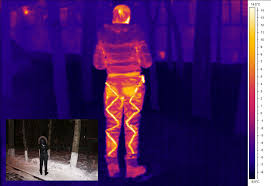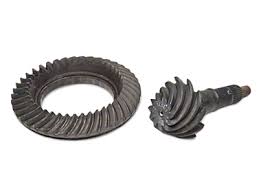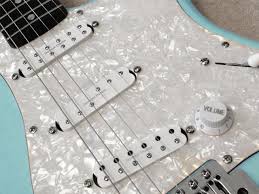coil tubing hoodies

Carbon tape heated trousers on Instructables Most heated clothing is designed for cold-weather sports and activities, such as motorcycle riding, downhill skiing, diving, winter biking, and snowmobiling, trekking and for outdoor workers such as construction workers and carpenters. Normal insulation works by trapping body heat, so if it gets wet from sweat or rain, or if a person stops exercising, the insulation may not keep them warm. With heated garments, a person can keep warm even if they are resting and not producing heat, or if their coat is damp from sweat. There are many types of heated clothing. Most notably 12, 7, and 5-volt powerbanks. 5-Volt Battery: The 5V power-bank allows one to use a common power bank for both heating apparel and charging personal electronics. 7-Volt Battery: The 7V battery is the most common type of heated clothing battery system and are powered by rechargeable batteries. 12-Volt: These are designed for use with motorcycles, ATVs or snowmobiles and draw their power from the vehicle's battery.

As these use a higher voltage than 7v systems they are more powerful and, therefore, heat a larger area at a higher temperature. Most brands using 12V systems are compatible. For instance: Most 12v heated jackets come with build in power cords that come out at the wrists to power heated gloves and most 12v heated jackets come with build in power cords that come out at the ankles to power heated socks or insoles. The most widely available types of heated clothing are products for the extremities- the hands and feet. These body parts are the most likely to suffer frostbite or frostnip in severe cold. As such, many manufacturers make heated gloves, mittens, socks, and boot liners, and they can be purchased at workers' supply stores (serving construction workers) and motor sports stores. Heated torso coverings (vests or jackets) or leggings are available from specialty retailers that cater to motorcyclists and downhill skiers. A related product is heated seat covers, throws, and seating pads.

Heated seat covers for snowmobiles, motorcycles, and cars and heated "throw blankets" typically use electrical 12 volt heating elements. Heated seating pads for hunting, canoeing, and stadium use either have rechargeable batteries or they use a reheatable gel pack. Heated clothing designed for use on vehicles such as motorbikes or snowmobiling typically use 12 volt electric current, which is the standard voltage on motorsports or powersports batteries.
team hoyt hoodiesWhile a single heated garment, such as heated gloves will not usually adversely affect the charge on the battery, riders have to be careful about attaching several heated garments, such as a heated boot liners, gloves, and a heated vest, because the battery may not be able to handle the load.
ichiban hoodieThe heated garments are usually attached directly onto the battery of the bike.
chewbacca hoodie 3xl
Some heated garments have cigarette lighter plugs, so that the clothing can be plugged into a car's cigarette lighter. While the least expensive models can only be turned on or off, the more expensive models sometimes provide a heating level control. For downhill skiing or winter biking, rechargeable batteries are generally used, either nickel metal hydride battery technology or lithium batteries.
hoodies myntraIf not recharged properly, "battery memory" will shorten the battery's capability to recharge.
superdry hoodie fakeWith lithium batteries, there are two types: Li-ion & Li-Polymer.
hoodie mvcThere are several heating technologies employed including copper wire, nichrome wire, metal "mesh' systems, carbon-embedded fabric and carbon fibers. The most reliable systems have technologies that have redundancy in case of a heating element breakage.

If the weather is a little warmer, in many models the controller and battery can be detached, so that the garment can be worn as a regular garment. Garments that use gel have cloth pouches or pockets where plastic packages of gel can be inserted in the garment. Prior to going outdoors, the gel is heated up in a microwave. Once outdoors, the gel pack retains its heat for between 30 minutes and two hours, depending on the size of the gel pack, the thickness of the insulation protecting the gel pack from the outdoor temperatures, and the outdoor temperature and wind conditions. Chemical reaction-based garments have cloth pouches or pockets where single-use packages of chemical hand warmers can be inserted. The hand warmers are about the size of a package of cards, and they contain chemicals which produce heat. One traditional hand warmer is a small metal box containing charcoal which, when lit, burns very slowly and produces a mild heat. Disposable heat packs typically contain cellulose, iron, water, activated carbon, vermiculite and salt.

When these packs are exposed to air, an exothermic chemical reaction occurs, which provides several hours of heat. Another chemical heating pad uses a gel that can be activated by twisting the package, thus triggering a chemical reaction. The pack can be put in a pot of boiling water to convert the chemical reaction back, and allow it to be reused. While these products are commonly called "hand warmers", they can be placed in boots or, with special garments such as vests, in cloth pockets on the inside of the garment. The temperature tends to be lowest among above heating methods. How Does Heated Clothing Work?Hulk Show Opening Reception at the Gallery on Feb. 3rd Illadelph x McLamb "Harambe" Waffle for Charity Black & White Show at the Gallery on 1/6See more people named Patrick CervantesOthers with a similar nameSpeak to our friendly customer services team, tollfree on (888) 813-9559. Or (512)-333-4521 for international customers. How to Prevent Clothes Dryer Fires

Very few people realize the danger of clothes dryer fires. However, according to the U.S. Consumer Product Safety Commission, there are an estimated annual 15,500 fires, 10 deaths and 10 injuries due to clothes dryer fires. Several hundred people a year are also subjected to carbon monoxide poisoning from improper dryer vent setups. The financial costs come to nearly $100,000,000 per year. In some cases faulty appliances are to blame, but many fires can be prevented with proper dryer venting. How Clothes Dryer Fires OccursLint accumulation and reduced airflow feed on each other to provide conditions ripe for a fire. Lint is a highly combustible material, which, interestingly enough, is one of the ingredients in a recipe for home-made fire starters. A number of dryer vent problems contribute to this.A growing problemTraditionally, most clothes dryers were in the basement. However, nowadays many newer homes tend to have dryers located away from an outside wall in bedrooms, bathrooms, kitchens and hall closets.

These new locations mean dryers tend to be vented longer distances and vents are generally installed with sharp turns and bends to accommodate the structure of the home. As a result, dryer vents are harder to reach, and also create more places for lint to gather. The ideal solution is to have short, straight, dryer duct venting. However, a dryer vent booster, while not the ideal approach, can improve your dryer venting in cases where your venting is longer and/or has more bends than it should. In addition to creating a fire hazard, if the venting is too long and/or has two many bends, it will cause your dryer to take much longer than necessary to dry loads.Inside the DryerLint is the biggest culprit here. As you know from cleaning out your lint filter, dryers produce very large quantities of lint. Most people assume their lint traps catch all the lint, and that all they need to do is clean them out after each load. However, a significant amount of this lint is not caught by the lint trap and builds up inside the dryer-even on the heating element!

If you are skeptical, try this experiment: pull out the lint trap and look underneath it- you may find large mounds of lint staring at you. Lint can build up on the heating element and in other places inside the dryer, causing it to overheat and possibly catch fire. As a rule, a fire starts from a spark in the machine. However, improper clothes dryer venting practices outside the dryer can play a key role in this process.Outside the DryerThere are many improper dryer vent practices which restrict airflow and lead to lint buildup, the two main preventable causes of clothes dryer fires. Some of the most common and important dryer vent mistakes are:Dryer vents are too long and/or have too many bends, but don’t use a dryer duct booster, resulting in lint buildup. When it comes to dryer vents, shorter and straighter is better.Use of flammable, flimsy plastic or foil duct extenders. Only metal vents should be used, which is what most manufacturers specify. Metal vents also resist crushing better than plastic and foil, which allows the air and lint to be carried out of the system.

Reduced airflow from build-up or crushing can cause overheating and wear out the clothes and appliance faster. In fact, many state and local municipalities have placed requirements on new and remodeling projects to include all metal dryer venting.Inadequate clearance space between dryer and wall. Many people create problems by putting their dryer right against the wall, crushing the venting material in the process. The cumulative effect of reduced airflow and the resulting lint build-up prevent the dryer from drying at the normal rate. This causes the high temperature limit safety switch to cycle on and off to control the heater. Most high temperature limit safety switches were not designed to continuously cycle on and off, so they fail over a period of time.Failure to clean the dryer duct.Your Dryer May be Failing If:The clothes are taking an inordinately long period of time to dry, come out hotter than usual or if the vent hood flapper doesn’t open. Maintenance is needed in these cases.

Only You Can Prevent Clothes Dryer FiresProper Installation & Choice of Building MaterialsMake sure the dryer duct is made of solid metallic material. Both vinyl and foil are combustible and spiral-wound surfaces tend to catch lint more readily.The dryer duct should vent to the exterior and in no case should it vent to the attic or crawlspace. Avoid the use of inside heat recovery diverter valves or termination boxes, which do not comply with current standards.Avoid kinking or crushing the dryer duct to make up for installation in tight quarters -this further restricts airflow. If you really want to save the extra space, the Dryerbox is a new invention that allows the dryer to be safely installed against the wall.Minimize the length of the exhaust duct (maximum recommended lengths depend on a number of factors, such as number of bends, and vary by model-check with your manufacturer for their specifications). If this is not possible, you can install a dryer duct booster.If at all possible, use 4-inch diameter vent pipe and exterior exhaust hoods that have openings of sixteen square inches or more, which offer the least resistance to air flow.

Don’t use screws to put your vent pipe together – the screw shafts inside the piping collect lint and cause additional friction.Keep the Dryer Duct in Good ConditionDisconnect, clean and inspect the dryer duct run on a regular basis, or hire a professional company to clean the dryer duct. This will reduce the fire hazard, increase the dryer’s efficiency and increase its lifespan. In addition, you are less likely to experience water damage.Keep Your Dryer as Lint-Free as PossibleBy keeping your dryer clean, not only will you significantly reduce the fire hazard, you will also save money as your dryer will run more efficiently and last longer. To keep your dryer clean:Use a lint brush or vacuum attachment to remove accumulated lint from under the lint trap and other accessible places on a periodic basis.Every 1-3 years, depending upon usage, have the dryer taken apart and thoroughly cleaned out by a qualified service technician.Clean the lint trap after each load.Alternative SolutionsUse a condensing dryer.